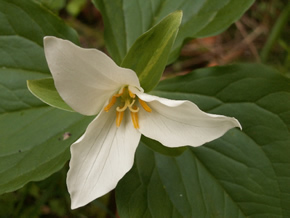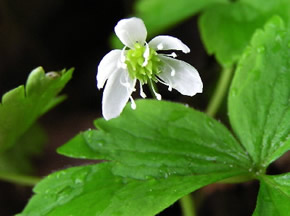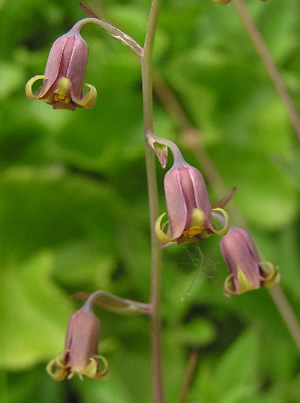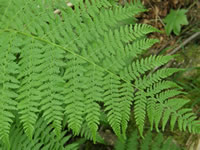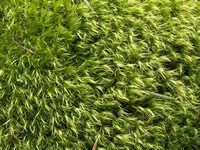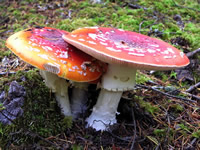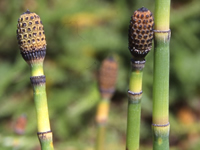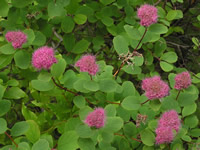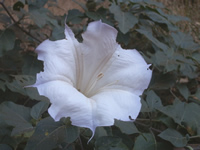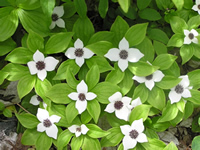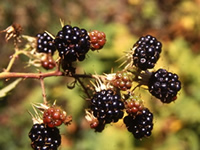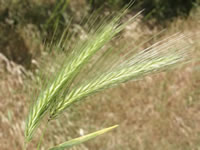|
|
The early flowers brighten up the forest floor and some of the earliest are such stunning beauties as the Satin Flower, Sisyrinchium douglasii, left, and Shooting Stars, Dodecatheon hendersonii, right, both of which like open areas and rocky terrain. |
|
|
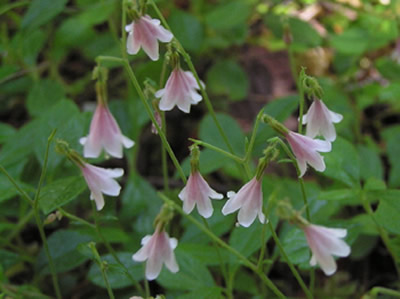 |
One of our prettiest and most widely distributed native plants is the Twinflower, Linnaea borealis, a creeping broad-leaf wildflower which only grows to about 6 inches tall. As the name suggests it carries two flowers on each leafless stem. |
| |
|
|
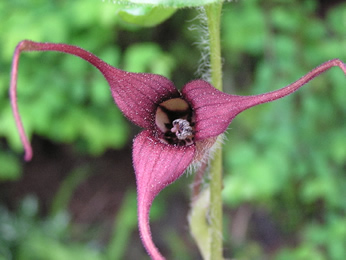 |
|
|
One of the harder flowers to spot is Wild Ginger, Asarum caudatum, as it hides its flowers under its own leaves. This also makes it difficult for flying insects to pollinate, so that's left for beetles to do |
|
|
|
There are three plants protected by law in Canada, one is a tree, the flowering Dogwood,
one is a shrub, the Pacific Rhododendron, and the other is the Western Trillium, Trillium ovatum, left, which can take up to 17 years to flower. Another pretty white flower is the Easter Lily, Erythronium oregonum, right. |
| |
|
|
|
|
|
One of the weedy plants that one may come across is the Creeping Buttercup, Ranunculus repens. The identifying mark of this flower is in the leaves as they bare light coloured blotches that are shown here. |
| |
|
|
|
|
|
One of the higher elevation plants is Lyallii anemone, with the cute common name of Little Mountain Thimbleweed. This rather rare anemone has very small flowers and often goes unnoticed. This is in contrast to the image on the right, Northern Bedstraw, Gallium boreale which clings to you as you walk past it. |
| |
|
|
|
One of the prettiest plants to discover is Bronze Bells, Stenanthium occidentale, another flower that is well-adapted higher elevations.
And so, next time you're strolling through the woods take time to stop and take close notice. The wonders you may discover will enhance your experience. |
|







